This is an image of Venus.
Click on image for full size
NASA/JPL
The Earliest History of Venus
As the process which formed them came to an end, the planets may have been left in either of the following two states:
- very warm, separated into layers, with lots of water on the surface, with volcanic activity, as well as continental drift.
- cold and rocky, needing to be warmed from the inside before activity is seen on the surface. The planet never separates into layers, and the planet never forms a core.
With Venus, the first case is probably the most likely.
You might also be interested in:

What types of instructional experiences help K-8 students learn science with understanding? What do science educators teachers, teacher leaders, science specialists, professional development staff, curriculum designers, school administrators need to know to create and support such experiences?
...more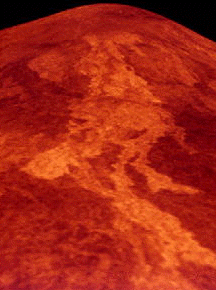
The Earth-planets formed with the gathering of rocky material and volatiles out of the primitive solar nebula. As they finished forming, the surface continued to be hit by the remnant of planetary material
...more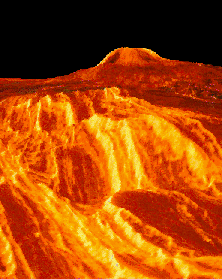
Like Mars, there is no plate tectonics on the surface of Venus. The surface of Venus does not *seem* to have changed or moved in billions of years. Unlike the case of Mars, however, careful examination
...more
Alpha Regio is an example of what is known as a "Plateau Highland" of Venus. The only volcano known to be found on Alpha Regio is Eve Mons. A Plateau Highland is like a continent, and is different from
...more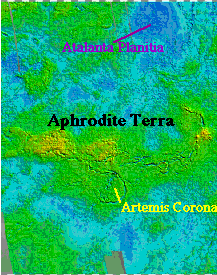
Aphrodite Terra, the Greek name for the goddess Venus, is about the size of half the continent of Africa, and is to be found along the equator of Venus. Aphrodite Terra is different from Ishtar Terra in
...more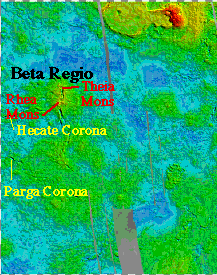
Beta Regio is an example of what is known as a volcanic rise, which makes Beta Regio more like an island than a continent. Volcanic rises such as Beta Regio are broad, sloping highlands over 1000 miles
...more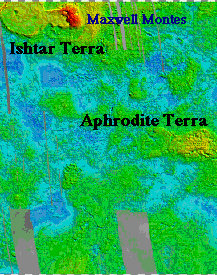
Ishtar Terra is one of the Plateau Highlands of Venus, is found near the north pole, and is about the size of the continental United States. Ishtar Terra contains the four main mountain ranges of Venus
...more
This image clearly shows a channel where something once flowed. Without proper measurements, scientists can only guess what sort of liquid may have once flowed through this channel. On Earth, such channels
...more















